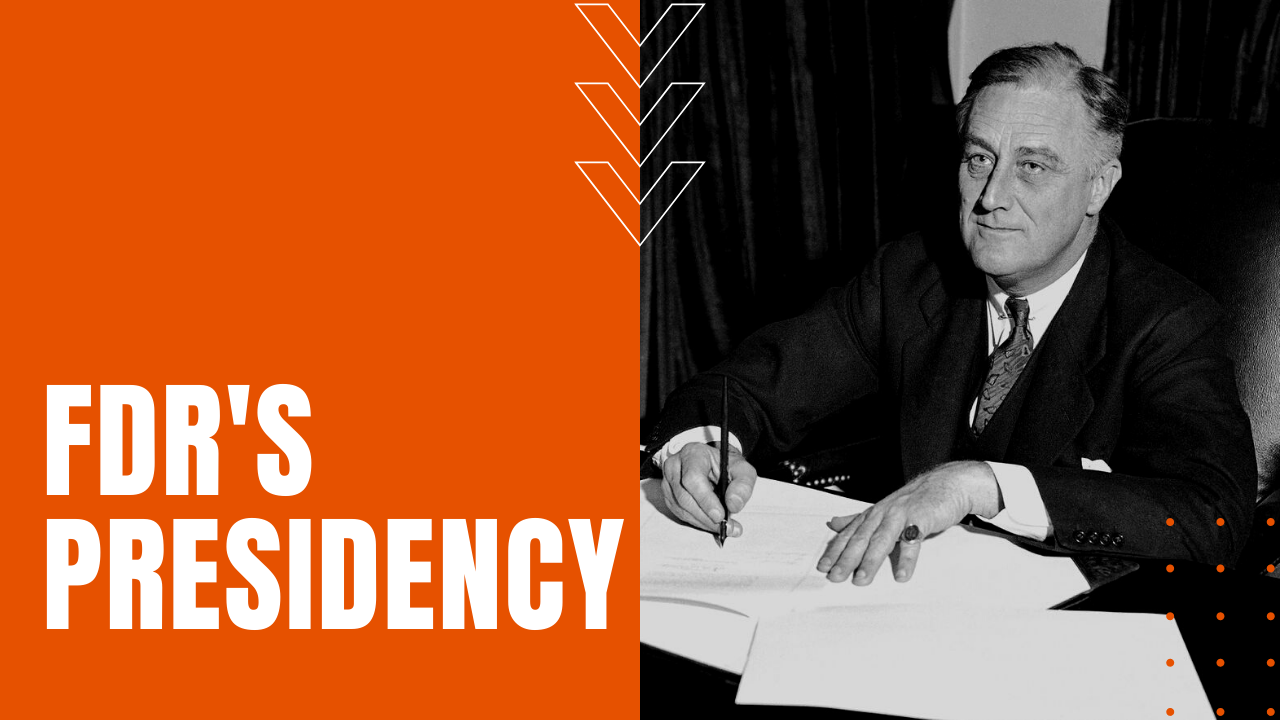FDR Presidency: Four Terms, Great Depression, New Deal and More

Born into a prominent family in Hyde Park New York—including his fifth cousin and 26th American president, Theodore Roosevelt—Franklin Delano Roosevelt was educated in such prestigious institutions as The Groton School, Harvard College and Columbia Law School.
After practicing law for several years, FDR entered politics at the state level, including one federal post as Assistant Secretary of the Navy under President Woodrow Wilson. In the 1932 presidential election, Roosevelt defeated Republican incumbent Herbert Hoover in a landslide victory, kicking off the only four-term presidency in American history.
FDR’s Leadership and New Deal
Considered one of the most influential figures in world events during the first half of the 20th century, FDR would lead the nation through the Great Depression during his first two terms in office, followed by World War Two in his third and ultimately truncated fourth terms as president.
During the Great Depression, FDR built his New Deal Coalition, which would define modern liberalism in the U.S. throughout the middle third of the 20th century. During the first 100 days of Roosevelt’s first term in office, FDR moved decisively to end Prohibition by amendment to the U.S. Constitution, followed by a slew of legislative initiates focused on stimulating a collapsed American economy.
Along with the passage of 12 major laws, almost every American found something to be pleased about and something to complain about in FDR’s robust collection of bills, but it was clear to all that FDR was engaging the sort of direct and vigorous action he had promised in his inaugural address.
When Did FDR Get Polio?
Stricken by polio in 1921, few Americans knew that FDR was bound to a wheelchair, which in the days before television was something a public leader could still keep from the limelight. He used radio to speak directly to the American people, giving 30 fireside chat addresses during his long reign as president.
World War II
After Japan’s unprovoked attack on Pearl Harbor, FDR would lead the nation through yet another turbulent passage in American history, providing reassurance and resolve to a nation’s laser-like determination to eradicate totalitarian aggression.
Not three months into his fourth term in office, the weight of his leadership role in World War Two saw a drastic decline in FDR’s health. On April 12th, 1945—some five weeks before Victory Day in Europe—FDR passed away from a massive cerebral hemorrhage at his “Little White House” retreat in Warm Springs Georgia, bringing an end to one of the most revered presidents in American history.
Today, FDR’s surviving programs and legislation include the Securities and Exchange Commission, the National Labor Relations Act, the Federal Deposit Insurance Corporation, Social Security and the Fair Labor Standards Act of 1938.
